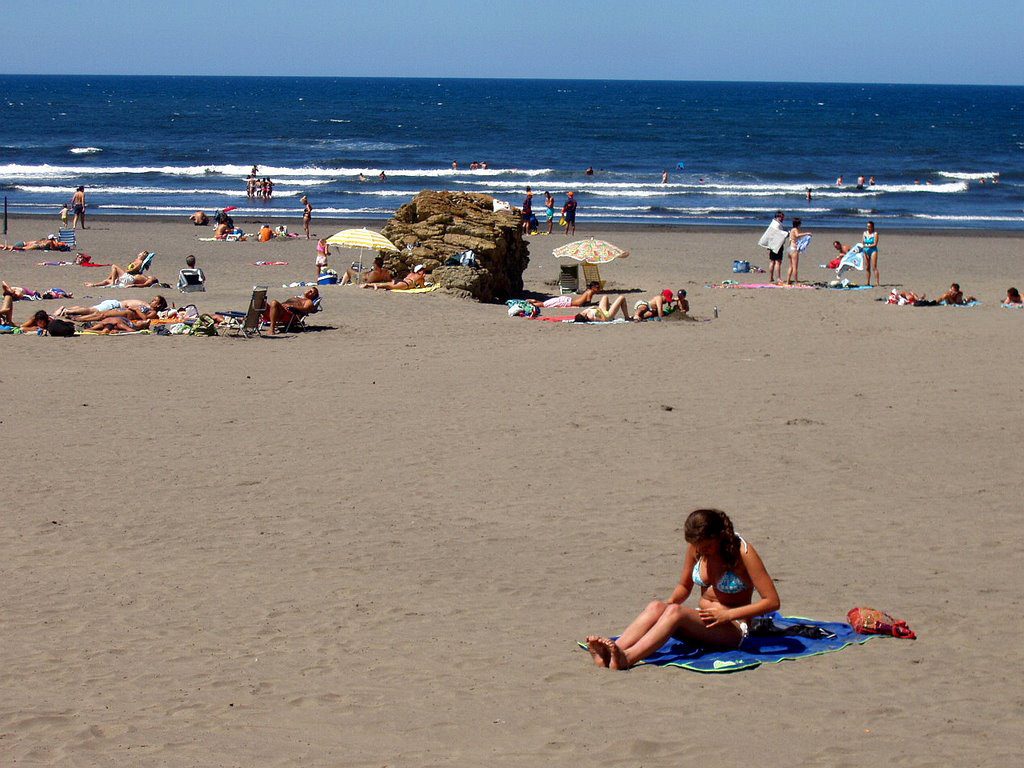Contenidos
Playon de bayas asturias
beaches for dogs
Playón de Bayas or Sablón. Sablón comes from Sable, which in Asturian means sand, or “a lot of sand”, which is what defines the beach. Very popular with nudists. Lifeguard on weekends. It is accessed by the road to Asturias Airport: about two kilometers before arriving, take the turnoff to “Santa Maria del Mar” and shortly before reaching it, take the turnoff that already indicates Playón de Bayas. There is parking near the beach. If you like walking or running this is the longest beach in Asturias (from Soto el Barco to the village of Bayas, about 6km). The sand is black but very fine, which allows you to run not only naked, but also barefoot. It is usually given free camping although it is not authorized. In some guides distinguish this beach by zones and call Quebrantos to the west and Requexinos to the east, but the beach does not put these names and can lead to confusion. Therefore the whole beach is of nudist tradition and it is better to forget about partial denominations. Beach specially recommended by the Naturist association ANAPA.
dog beaches asturias
Long, dark golden sands and strong waves. This is the beach of Bayas or El Sablón, a beautiful sandy area that joins the beach of Los Quebrantos forming an extensive shore, more than 3 kilometers long, ideal for long walks. Between them, we find the Ranón river, natural limit of the councils of Castrillón and Soto del Barco.
At its eastern end, there is an area known as Los Requexinos, of great natural beauty and frequented by nudists. For travelers arriving in Asturias by plane, the Bayas beach is not to be missed; it is that dark and large sandy area that can be seen just before landing.
playón de bayas surf
It was declared a natural monument by Decree 20/2002 of the Government of Asturias. It occupies an area of 109.57 ha, divided between the Playón de Bayas and cliffs of Punta Socollo (69.88 ha), the island of La Deva (7.71 ha) and the sea area between the island and the coast (31.98 ha). It is included in the Cabo Busto – Luanco Site of Community Importance and in the homonymous Special Protection Area for Birds.
The beach plant communities, which are distributed on the upwelling deposits deposited by the tide, are well represented, with frequent presence of the beach spurge (Euphorbia peplis), declared a species sensitive to alteration of its habitat and only present in two other locations in Asturias: the beach of Barayo, limit of the councils of Navia and Valdés, and Frejulfe (Navia).
The gray dune communities are not very extensive and appear very degraded by pine and eucalyptus plantations. In spite of this, Bayas is home to an important group of flora characteristic of the gray dunes. Thus, it is not uncommon to observe sea spurge (Crucianella maritima), sweet lettuce (Reichardia gaditana) or sea dogfish (Medicago marina), all protected species that appear in a few stations of the Asturian coast.
asturias beaches
A walk along the longest sandy beach in the Principality Long, dark golden sands and strong waves. This is the beach of Bayas or El Sablón, a beautiful sandy area that joins the beach of Los Quebrantos forming an extensive shore, more than 3 kilometers long, ideal for long walks. Between them, we find the Ranón river, natural limit of the councils of Castrillón and Soto del Barco. At its eastern end, there is an area known as Los Requexinos, of great natural beauty and frequented by nudists. For travelers arriving in Asturias by plane, the Bayas beach is not to be missed; it is that dark and large sandy area that can be seen just before landing.
